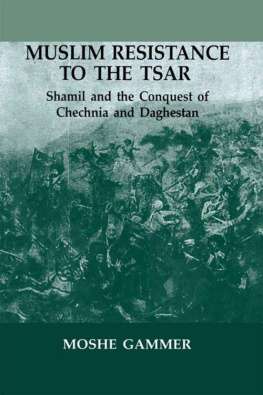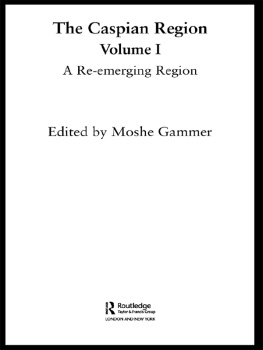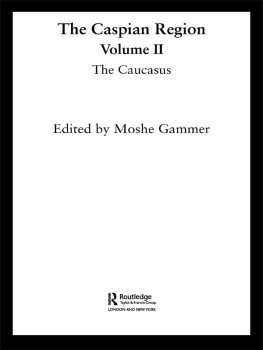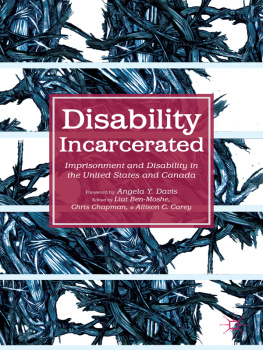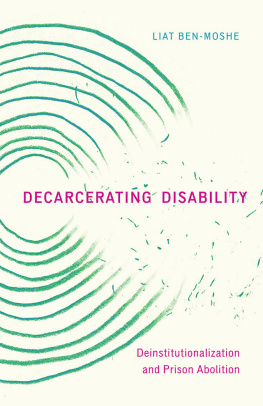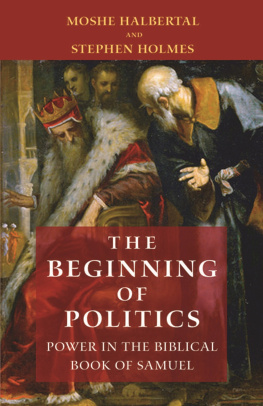MUSLIM RESISTANCE TO THE TSAR
Shamil (an artists impression)
First published 1994 in Great Britain by
FRANK CASS & CO. LTD.
Reprinted 2004 by Frank Cass
2 Park Square, Milton Park,
Abingdon, Oxon, 0X14 4RN
Transferred to Digital Printing 2005
Frank Cass is an imprint of the Taylor & Francis Group
Copyright 1994 Moshe Gammer
British Library Cataloguing in Publication Data
Gammer, Moshe
Muslim resistance to the tsar: Shamil and the
conquest of Chechnia and Daghestan.
I. Title
947.900882971
ISBN 0-7146-8141-5 (paperback)
ISBN 0-7146-5099-4 (hardback)
ISBN: 978-1-135-30912-1 (palm)
Library of Congress Cataloging-in-Publication Data
Gammer, M.
Muslim resistance to the tsar: Shamil and the conquest of
Chechnia and Daghestan/Moshe Gammer.
p. cm.
Includes bibliographical references and index.
ISBN 0-7146-3431-X
1. Shamil, ImM, 1798-1871. 2. MuslimsRussian S.F.S.R.
Caucasus, NorthernPolitical activity. I. Title.
DK511.C2G28 1993
947.00882971dc20
91-23436
CIP
All rights reserved. No part of this publication may be
reproduced in any form or by any means, electronic,
mechanical, photocopying, recording or otherwise,
without the prior permission of Frank Cass and
Company Limited.
Phototypeset by Intype, London
Printed and bound by Antony Rowe Ltd, Eastbourne
Jacket illustration: Shamil rallying his troops
before battle (painting by a later artist)
Contents
To Li-Ling
Grateful acknowledgement is due to the Institute of History, Language, and Literature of the Daghestani Academic Centre, Makhachgala, Daghestan, and to the Society for Central Asian Studies, London, for permission to reproduce the illustrations listed below.
frontispiece Shamil (an artists impression)
This book is based on a PhD thesis submitted at the London School of Economics and Political Science, University of London. First of all, I am grateful to my teachers and masters my supervisors Professor E. Kedourie and Dr D. C. B. Lieven who with infinite patience guided, helped and encouraged methrough this lengthy research. I always found their doors openand them more than willing to answer my queries and assist mein overcoming difficulties. No PhD student could have had betterand more helpful and responsible supervisors.
I consider myself very lucky indeed to have enjoyed the help, co-operation and encouragement of so many friends and colleagues. Marie Broxup and Dr Paul Henze were a constantsource of help and encouragement. Professor Osmo Jussila and Dr Hary Halen assisted me in Helsinki. Professors Michel Lesureand Alexandre Popovic extended a helping hand in Paris. In Istanbul I benefited from the friendship and help of Professor Mehmet Saray and Dr NSdir Devlet and their assistants. In Israel I enjoyed the advice, encouragement and help of Professor Michael Zand of the Hebrew University in Jerusalem and of allmy friends and colleagues at the Dayan Centre for Middle East-ern and African Studies at Tel Aviv University. Dr Butrus Abu Manneh of Haifa University shared with me his vast knowledgeof the Naqshbandiyya-Khalidiyya. Dr Maarten Maartinus van Bruinessen supplied me with information on the Nehii Branchof that order. Daniel Dishon was kind enough to transcribe the Austrian consular reports from Gothic to Latin script in additionto his important comments on the first draft. Massi Torfeh helpedme with Persian. A Pakistani friend, who prefers not to benamed, helped me with Urdu. Dr Stephen Jones helped me with Georgian and Dr Simon Crisp helped me with Avar. Michael Harpke, who is writing a PhD dissertation on a closely relatedsubject at the University of Wisconsin, Madison, kindlyexchanged with me notes and thoughts. Finally, this is the place to pay tribute to the late Professor Alexandre Benningsen, whoencouraged me in my research.
This study could not have been done without the assistance of the staff of all the archives and libraries I used. Specifically, Iam grateful to Jarmo Suonsyrja and the staff of the Slaavilainen Kyrjasto in Helsinki, who showed me that librarians in a nationallibrary can be friendly and helpful beyond the call of duty or anyexpectation. Dr Eric Ormsby supplied me with copies of his ownphotocopies of two letters by Shamil now in the possession of Princeton University Library, after the librarians there had beenunable to locate them. Dr Ernst Petritsch of the Haus-, Hoff-und Staatsarchiv in Vienna took the trouble of locating, photo-copying, and sending to me the relevant documents. Mr Mathewsand Mr Higgins, the librarian and deputy librarian of the London Library, generously allowed me to use the material bequeathedto the Library by J. F. Baddeley. Mr and Mrs Humphrey Brookallowed me to use the Benckendorf archive, and Dr Fr. Hillervon Gaertringen, as an historian himself, allowed me the use of the papers of Leutnant Hiller von Gaertringen, and even took itupon himself to photocopy and mail all the documents I required.
Finally, I am indebted to Eileen Roberts and the otherlibrarians at the inter-library loans department of the British Library of Political and Economic Science (the London Schoolof Economics and Political Science), who performed miracles ingetting me from all over the world all those publications withunpronounceable titles in strange languages. My thanks are duealso to Jane Pugh and Gary Llewellyn of the cartography unit atthe Geography Department of the London School of Economicsand Political Science, who taught and helped me to draw themaps.
Financially, this research could not have been undertaken with-out an Argov studentship from the London School of Economicsand Political Science. Further assistance was extended by the School, by the Anglo-Jewish Association and by the Leo Baeck(London) Lodge of Bnai B nth. My two stays in Helsinki, werefinanced by a Jewish fund which prefers to remain anonymous. My stay in Istanbul was financed by the Society for Central Asian Studies, as was the typing of the thesis. I am especially gratefulto Mr Djanogly, who contributed personally towards my researchin the archives in istanbul. Since, unfortunately, this researchdid not materialise, the money was returned without diminishingmy gratitude for this act of personal trust and generosity.
As ever, I am grateful to my friends, Debbie and David Arbiser and Eliezer Yemini, for their constant friendship andsupport.
Since this book deals with people who wrote Arabic, it wasdeemed proper to use throughout it the Arabic form of personaland place-names rather than the Russian form of these names. (The Russian form is used only in a few cases in which the Arabicis unknown.) However, the first time each place, and some of the names, are mentioned, their Russian form is given in squarebrackets. The Arabic alphabet used in the Caucasus includedseveral additional letters to signify sounds specific to local languages. The transliteration system from Arabic is as follows:





